Deep-fried until crispy then soaked in a savory broth, tender Eggplant Agebitashi could be your new favorite way to enjoy Japanese eggplant. I lightly score the eggplant so it cooks faster and absorbs the delicious dashi and soy sauce flavors. {Vegan Adaptable}
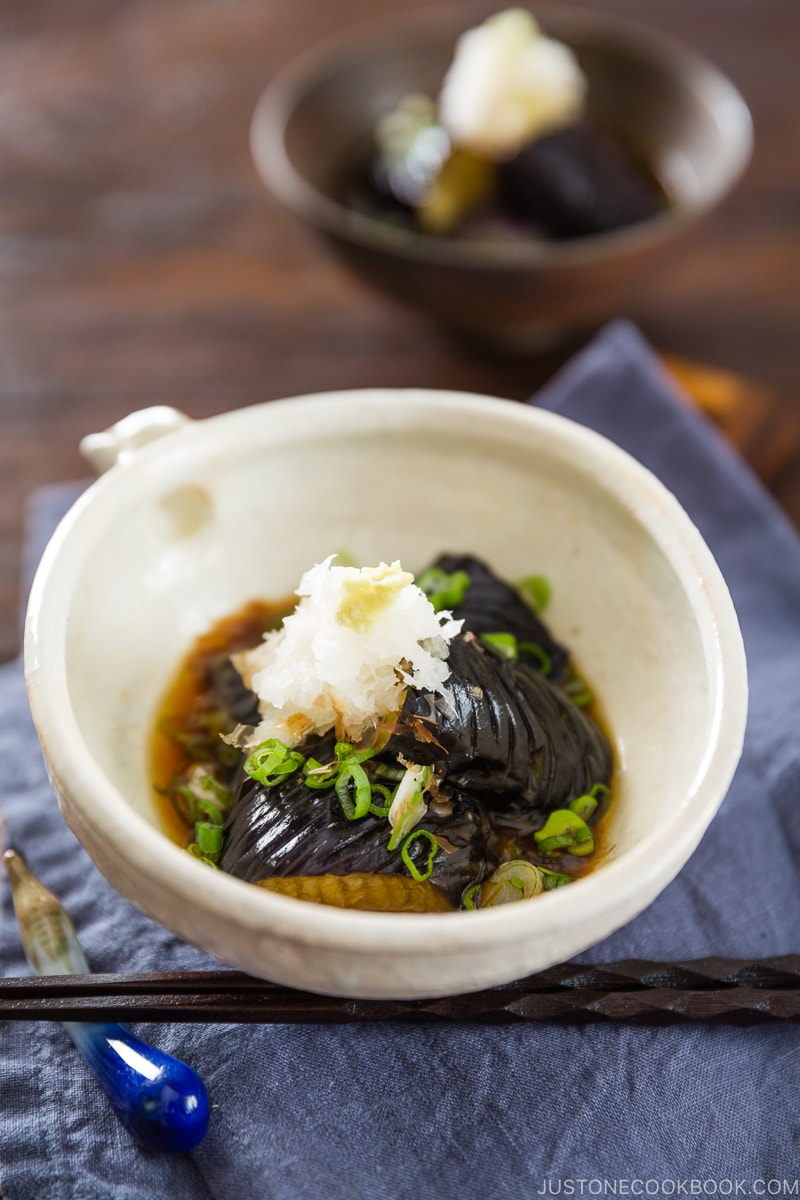
While growing up in Japan, my mother made a lot of eggplant dishes and it always made me wondered what was so good about eggplant. Personally, I prefer crunchy and crispy foods, and mushy, soft eggplant was not one of my favorite vegetables.
After I came to the U.S. and tried more varieties of eggplant dishes, I started to love eggplant. One of the eggplant recipes I was crazy about was a grilled eggplant sandwich with roasted bell pepper.
Then I started to make Japanese eggplant dishes which I didn’t care much for before. Today’s recipe, Eggplant Agebitashi (茄子の揚げ浸し) has become one of my favorite go-to eggplant menus.
Table of Contents
What is Eggplant Agebitashi?
Agebitashi means deep-fried and soaked. The dish is composed of deep-fried eggplant soaked in light dashi and soy sauce-based broth.
It’s a simple dish, yet you’ll be surprised how delicious eggplant can be after it absorbed all the flavors in the dashi broth. If you’re a fan of eggplant, I know you’re going to love this dish!

Helpful Cooking Techniques
This dish requires some Japanese cooking techniques that you might not be familiar with. So let’s go over them first.
Tip 1: Suage (素揚げ)
Deep frying vegetables without coating any flour or batter is called Suage in Japanese. Su means natural or uncoated in this case, and age (pronounce a-geh) means deep-frying. You might wonder what’s the idea behind deep frying eggplants.
Suage removes the bitterness of ingredients (such as in eggplant) and coating with oil prevents de-coloration of the eggplant. By cooking with oil, eggplant maintains its beautiful color. The eggplant will absorb oil first but then will release it after cooking.
Brief deep frying in hot oil makes the ingredients crispy on the outside, and the remaining heat will slowly cook the inside of the ingredients. Once cooked, the tender eggplant easily absorbs the broth.
You could also shallow fry eggplants. However, you have to make sure that the eggplant skin is nicely coated with oil at all times. I suggest combining the eggplant and oil in a large bowl first and rubbing the eggplant completely with oil with your hands first before you shallow fry. If you don’t, the water and moisture escaping from the eggplant will discolor and result in patchy skin.
Tip 2: Kakushibocho (隠し包丁)
Light scoring of the ingredients is called Kakushi-bocho in Japanese. Kakushi or kakusu means hidden and hide, and Bocho or hocho means a knife. This technique is used so that:
- The heat will go through the ingredient more easily
- Flavors (of the broth or seasonings) will be absorbed better
- The ingredient will be easier to cut with chopsticks
Technically, we score the ingredient without making it too visible (so when you serve, it’s not obvious). That’s where the name “kakushi” or “hidden” comes from.
We use this technique for ingredients that are hard to cook through and absorb flavors such as daikon, eggplant, and konnyaku.
How much should we score? It really depends on the thickness of the ingredient, but remember not to score too deeply otherwise, it might break the ingredient apart.
The same technique could also be called Kazari-bocho when the scoring looks pretty on the ingredient such as this eggplant. The purpose of scoring is the same, but it also looks decorative (“kazari”) so that’s how the name comes about.
Can’t make good incisions? Sharpen your knife and practice will make it perfect. 🙂
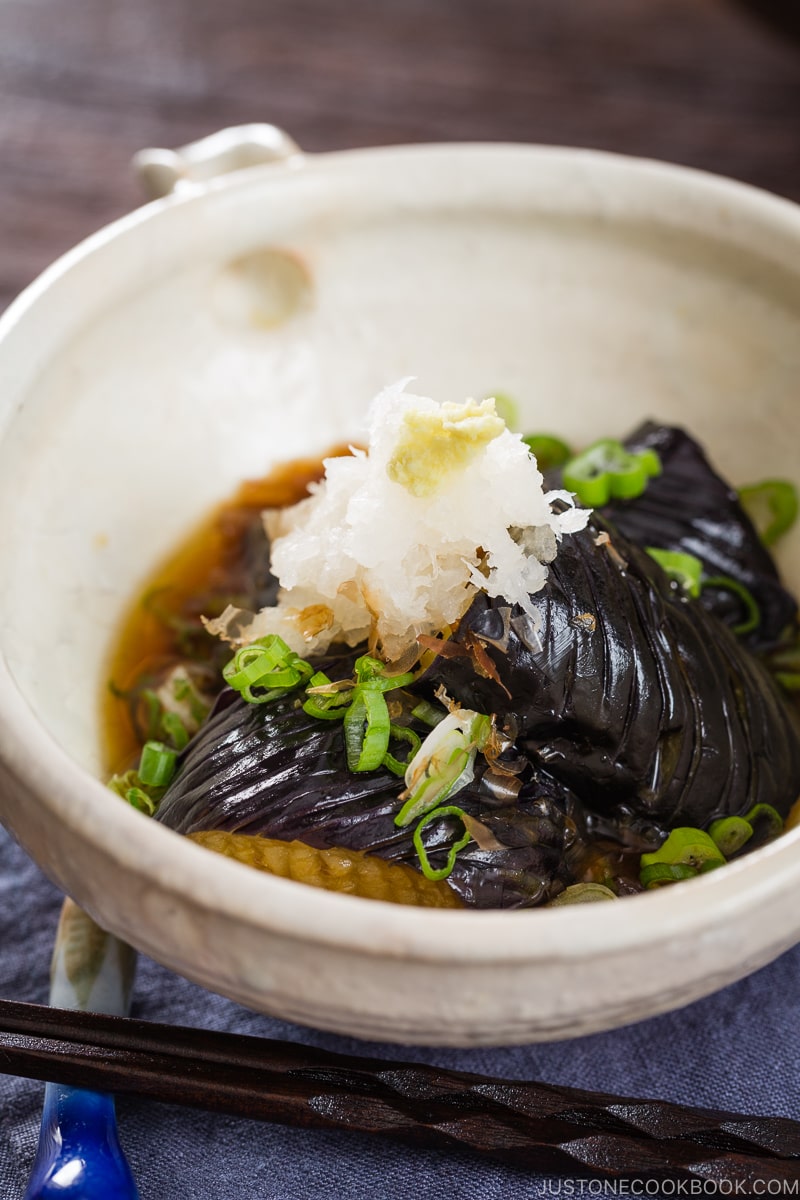
Make It Vegetarian/Vegan-Friendly
You might wonder if this can be a vegetarian/vegan dish. Sure you can! Replace Awase Dashi (bonito flakes + kombu dashi) with Vegan Dashi made with kombu and dried shiitake mushrooms!

And for garnish, omit sprinkling katsuobushi at the end. As easy as that!
Make Eggplant Agebitashi Gluten-Free
Many of you requested gluten-free recipes (thank you!), so I actually made this dish with gluten-free soy sauce. Of course, you can use regular soy sauce and you don’t need to adjust anything in the recipe.
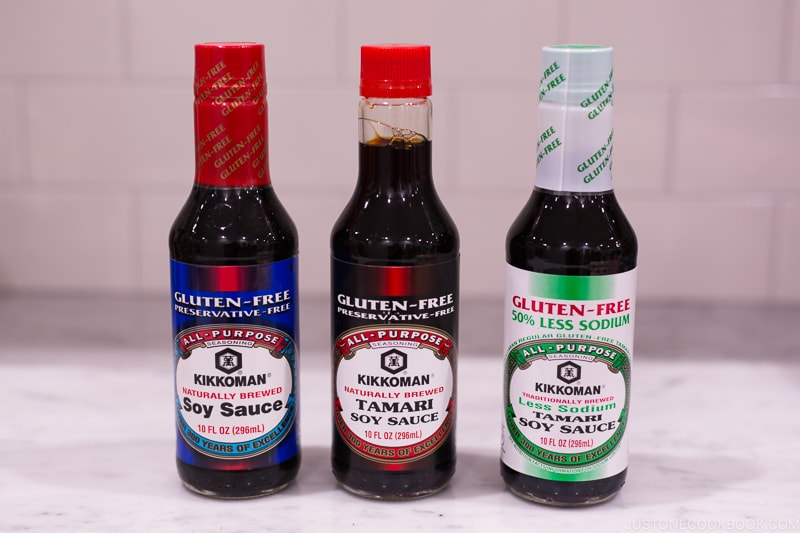
Kikkoman offers 3 varieties of gluten-free soy sauce, but for this recipe, I used regular gluten-free soy sauce (left) which tastes just like regular soy sauce. If you want to know more about this product, click here.
I hope you enjoy making this Eggplant Agebitashi recipe! If you try it, don’t forget to share your picture on Instagram, Facebook, or Twitter with #JustOneCookbook. Thank you so much for reading, and till next time!
Similar Recipes
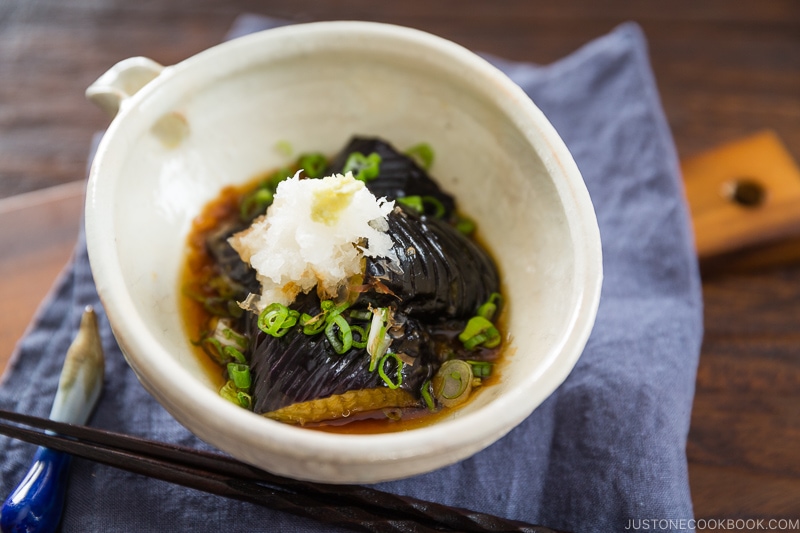
Wish to learn more about Japanese cooking? Sign up for our free newsletter to receive cooking tips & recipe updates! And stay in touch with me on Facebook, Pinterest, YouTube, and Instagram.
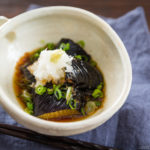
Eggplant Agebitashi
Video
Ingredients
- 2 Japanese or Chinese eggplants (10 oz, 283 g)
- 2 cups neutral oil (for deep-frying)
- 3 inches daikon radish (use the green top part for a sweet taste)
- 1 green onion/scallion
- 1 knob ginger (1 inch, 2.5 cm per knob)
- ⅓ cup katsuobushi (dried bonito flakes) (skip for vegan/vegetarian)
For the Broth
- ¾ cup dashi (Japanese soup stock) (use standard Awase Dashi, dashi packet or powder, or Vegan Dashi)
- 3 Tbsp mirin
- 3 Tbsp sake
- 3 Tbsp soy sauce (for this recipe, I used Kikkoman Gluten-Free Soy Sauce)
- 1 heaping Tbsp sugar
Instructions
- Gather all the ingredients.
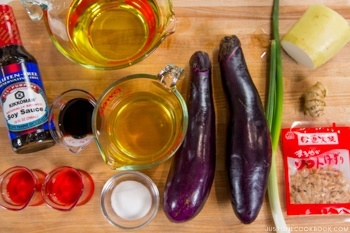
- In a saucepan, combine the broth ingredients: ¾ cup dashi (Japanese soup stock), 3 Tbsp mirin, 3 Tbsp sake, 3 Tbsp soy sauce, and 1 heaping Tbsp sugar. Mix it all together. Bring it to a boil and turn off the heat. Keep it covered so the broth doesn’t evaporate.
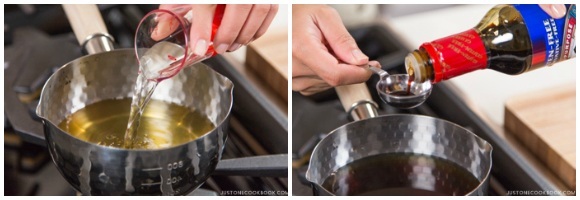
- In a deep-frying pot/saucepan, add 2 cups neutral oil and bring it to 320ºF (160ºC). While waiting for the oil, prepare the eggplants.
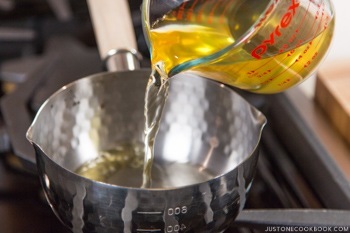
To Prepare the Eggplants
- You must cut the eggplant right before deep-frying to avoid discoloration. First, discard the tops of 2 Japanese or Chinese eggplants and cut in half lengthwise. Tip: While we usually soak eggplant in water to prevent discoloration, we will not soak in water for this recipe because we will deep-fry it without a coating.
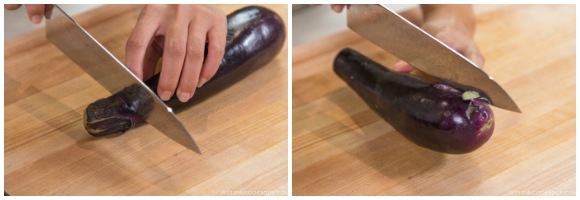
- Lightly score the eggplant with diagonal incisions on the skin side at ⅛-inch (3-mm) intervals. You could also score in a crisscross pattern. Do not cut through.
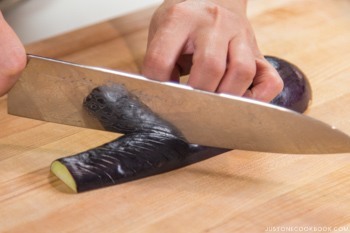
- After scoring, cut each piece into 3–4 sections. Make sure to wipe off any moisture with a paper towel.
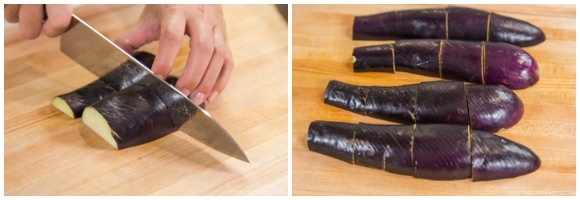
To Deep-Fry
- Check if the oil has reached at 320ºF (160ºC) with an instant-read thermometer or by sticking wooden chopsticks into the oil. If you see small bubbles forming around the tips, the oil is ready.
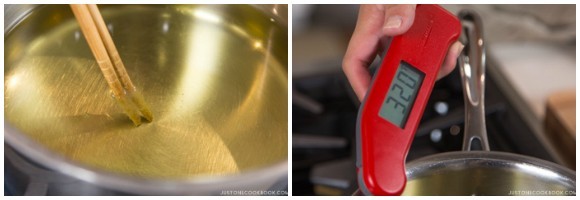
- Gently place a few pieces of eggplant in the oil, skin side down, and deep-fry for 2 to 2½ minutes. Fry in batches and do not overcrowd the pot. Remove from the oil and drain on a wire rack, skin side up. Repeat until all the eggplant pieces are deep-fried. Tip: When you deep-fry, do not crowd the pot because the oil temperature will drop quickly. Your ingredients should take up no more than about half of the oil surface area at any one time. If the oil temperature gets too low, take out the eggplant and wait until the oil reaches the right temperature. For more helpful hints, read my post How to Deep-Fry Food.
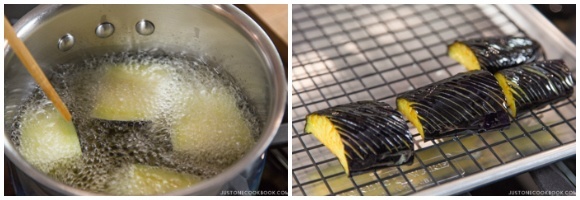
To Soak in the Broth
- When the eggplants have cooled, place them skin side up in a rimmed container or dish. Heat the broth until hot, then pour it over the eggplants to soak for at least 1 hour and up to several hours. To serve this dish chilled, put it in the refrigerator.
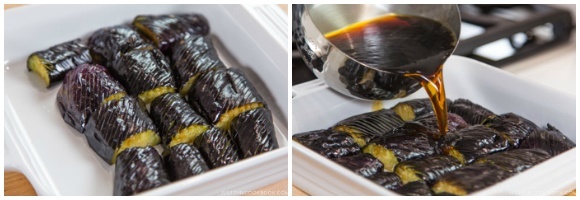
- While soaking, peel the skin of 3 inches daikon radish and grate it.
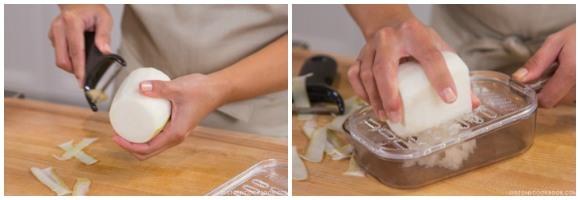
- Thinly slice 1 green onion/scallion and grate 1 knob ginger.
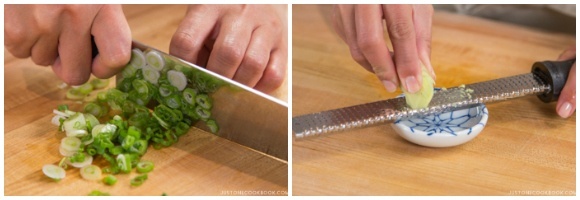
To Serve
- Put the eggplant pieces in individual serving bowls. Sprinkle with ⅓ cup katsuobushi (dried bonito flakes), then top with the grated daikon and grated ginger. Pour the soaking broth on top of the eggplant pieces (avoiding the toppings) and garnish with green onion. Serve chilled or at room temperature.
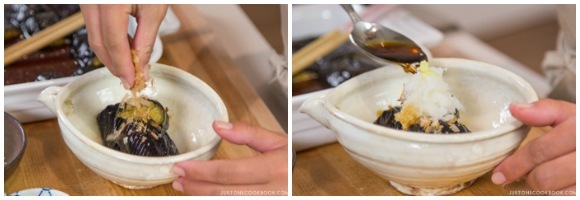
To Store
- You can keep the leftovers in an airtight container and store in the refrigerator for up to 2–3 days.

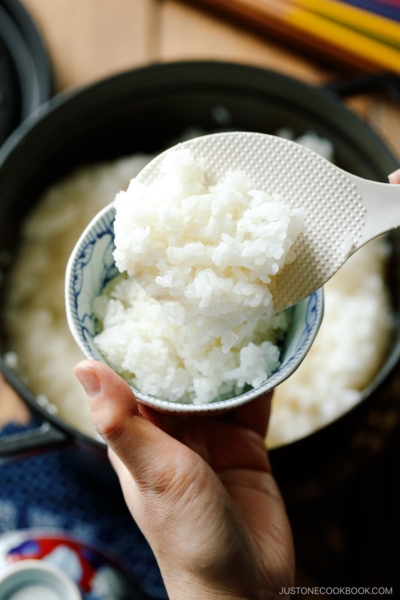
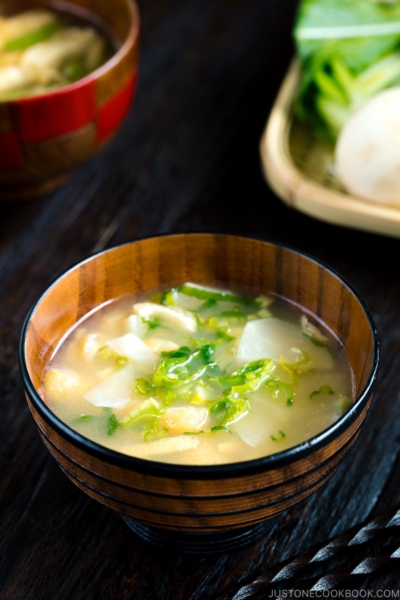





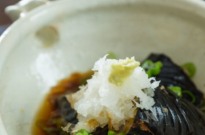
The Eggplant Agetabishi was time consuming but really worth the effort! I’ll be keeping this in my side dish arsenal!
Hi, Laura! Thank you for trying Nami’s recipe and for your kind feedback!
We are glad to hear you enjoyed the dish. Happy Cooking!
Hi Nami! Do you think an air fryer would work as well to fry the eggplants? I make this so often, but I would like to use less oil with the same or very similar results. Thanks, Natalie.
Hello, Natalie. Thank you for testing Nami’s recipe.
We’ve never tried this recipe in an air fryer, so we’re unsure how it’ll come out. Brushing the oil on the eggplants may be necessary to achieve a similar texture. If you try it, please let us know how it goes. 😃
I love this recipe. But every time i make it i have to go buy a bottle of sake. Is there a cooking sake that has a long shelf life?
thanks for the info!
And also….I know I know……I should be happy to buy a bottle of sake, use it and then drink the rest…but alas…I do not drink. <3
Hi, Mary! Thank you for trying Nami’s recipe.
We highly recommend using the drinking sake to cook as well. It will have a longer shelf life.
This post has further information on sake.🤗 https://www.justonecookbook.com/sake/
Love your recipes ❣️🙏🏼
Hello, Lisa. Aww. Thank you very much for your warm remarks to Nami.
We hope you continue to love her recipes! 🥰
Made this last night to go with the teriyaki salmon. Absolutely delicious! Didn’t have daikon so I put grated white carrot and a sprinkle of bonito flakes on top. My oil was sizzling at the beginning but I had the temp a bit too low, so my first couple of pieces turned out gross like you warned in the recipe. The rest were all a great firm and crispy texture. This tasted like a restaurant dish, will make again
Hello, Kira! We’re delighted you liked the Eggplant Agebitashi.
Thank you very much for taking the time to read Nami’s post and sharing your cooking experience with us.
Happy Cooking!
Oh I fell in love with eggplants after trying this recipe! They were so delicious! I will cook eggplants more often from now on!
Hi Wing! Aww. We are so happy to hear you have become a big fan of eggplant now after trying Nami’s recipe! This meant a lot to us and brought us great joy.
Thank you very much for trying this recipe and sharing the story and photo with us💞.